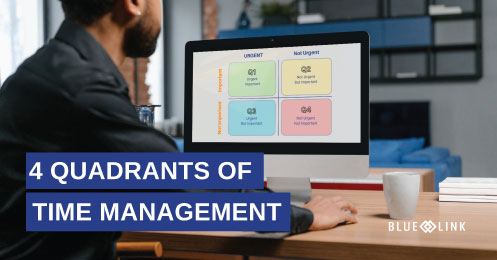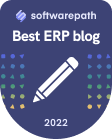Implementing an ERP system is a critical step for any organization, offering the potential to streamline operations and enhance efficiency. An ERP system enables businesses to manage and streamline processes such as inventory, accounting, purchasing, sales, and light manufacturing on a unified platform. Implementing an ERP solution helps scale operations in alignment with organizational growth.
Transitioning from an entry-level accounting system like QuickBooks to a more robust and scalable ERP software system necessitates proper software implementation for successful deployment. This guide provides comprehensive insights into the entire implementation process, including challenges you may face before, during, and after implementation. It covers the best approaches to finding a suitable vendor, common pitfalls that may result in an unsuccessful transition, and essential post-implementation actions and steps.
TLDR: Article Sections
This detailed guide is designed for the successful implementation of ERP software, with a focus on small and medium-sized businesses. To quickly navigate to a specific section, click on one of the links below.
- 8 ERP Implementation Challenges You Should Be Aware Of
- Before ERP Implementation: Choosing the Right Vendor
- What Does ERP Software Implementation Include?
- How Does the Vendor’s Schedule Affect the ERP Implementation Timeline?
- Tips for Effective Data Migration During ERP Implementation
- The Importance of Phase 2 ERP Software Implementation
- Top 5 ERP Software Implementation Mistakes
- ERP Implementation is only the Beginning
8 ERP Implementation Challenges You Should Be Aware Of
50% of ERP implementations fail due to the complexity of the process. But don’t let this scare you! With the right vendor, your implementation will be successful. It’s important to be aware of the most common ERP implementation challenges so that you’re able to take steps to prevent implementation failure, business disruptions, delays, and other costly headaches. Here are 8 common ERP implementation challenges:
- Picking the Wrong Software Vendor
- Data Migration Challenges
- Change (Mis-)Management
- Misaligned Expectations
- Not Aligning Processes with Technology
- Going Over Budget
- Business Disruption
- Lack of Post-Implementation Support
1. Picking the Wrong Software Vendor
When a company picks the wrong software vendor to begin with, the implementation process can be an uphill battle. After a sale closes, it’s the vendor’s job to provide the right post-sales support. If a vendor sets certain expectations for what the implementation process looks like but does not follow through with those expectations, then that can be problematic. Perhaps they are not training you properly or showing you how you can get the most value out of the system. Or maybe they’re not providing you with the custom work that you need for your unique business processes.
Your vendor may have also misled you into believing that their system is compatible with your company’s processes when it isn’t. They may have advertised themselves as a “one size fits all” solution when there is no such thing. It’s usually during the implementation process when companies begin to see that the system, they purchased wasn’t a good fit for their business.
2. Data Migration Challenges
Data migrations can be a major hurdle in the implementation process for a variety of reasons. For one, finding all your data can be difficult if it’s scattered throughout multiple sources. Locating all your data can prove difficult, especially if it is handwritten and stored physically. Ensure you have access to all your data ahead of implementation to avoid inaccurate or duplicate data when you Go-Live.
Validating and cleansing data before a migration can be challenging. There may be outdated or inaccurate data that you and the vendor must work to clean up. The last thing you want in your new ERP system is for it to be filled with unwanted data as it can lead to mistakes and poor decision-making.
3. Change (Mis-)Management
When deciding to switch to a new ERP software system, you cannot neglect how you manage change amongst members of your organization. You likely already got buy-in from other leaders within the company before signing the proposal, but it’s important to have a plan in place to address the change with employees. The implementation process is when a big change is being implemented, and it’s your responsibility to ensure that everybody is as comfortable as possible to make the transition seamless. Many will resist change and miss how they used to do things before. To manage change, you must effectively explain the benefits that come with the new system and provide the proper education and training on how to use it.
4. Misaligned Expectations
During an ERP implementation, there is potential for the expectations of the buyer and vendor to be misaligned. Your software vendor must set realistic expectations about what they can complete in a set amount of time. For instance, you might expect them to frequently be on-site with you during the implementation process when they don’t have the time and resources to be able to do that. Misaligned expectations have the potential to lead to resentment and can strain the relationship with your vendor.
To set the right expectations, it’s important to work with your vendor to come up with a comprehensive mutual plan so that the project stays on course. Having a plan ensures that goals and deadlines are being met to ensure that the implementation is completed in a reasonable amount of time. If you pick the right software vendor, they will also be transparent with you about what their software can or cannot do so there are no surprises down the line. In general, there needs to be lots of communication and transparency both in the initial phases and throughout the implementation process to ensure both parties are on the same page.
5. Not Aligning Processes with Technology
One of the main purposes of ERP implementations is to ensure that your organization knows how to get the most out of your system. You may be able to utilize certain functionality with your current practices, but you’re likely going to get more out of your system by adopting newer practices. For example, your new software might have order-picking functionality that allows you to track when orders are being picked. However, if you don’t improve your order-picking strategy by reorganizing your warehouse or adopting a new consolidated picking strategy then this functionality will be useless. Your vendor should help you to make sure your software and business processes are aligned so that you can maximize your investment into your new ERP software system. This means picking a vendor that has expert consultants who care and will go out of their way to make their clients’ lives easier.
6. Going Over Budget
ERP implementations can go over budget because of a lot of hidden costs that vendors fail to mention. For example, some vendors might promise a “guaranteed implementation cost” only for the final cost to end up being nowhere near the price that was initially discussed. Software implementation services are typically billed on an hourly basis, and many variables make it difficult to predict the final cost. Training costs are often the most underestimated as your staff may require more training than you think to be able to maximize the capabilities of your new software.
7. Business Disruption
A major challenge in ERP software implementations is how it has the potential to disrupt your business processes. Roughly two-thirds of businesses experience operational disruption when implementing ERP software. There may be some downtime, particularly if you’re taking a big-bang approach to data migration and doing it all at once. It’s also going to take time for employees to become fully trained in using the software, which might result in disruptions. Employees might have less time to complete their normal work since they are spending time learning the new system.
8. Lack of Post-Implementation Support
ERP software implementation doesn’t just end after your go-live date. Your software vendor must provide ample post-implementation support for your implementation to be successful. You and your vendor still must work towards continuously improving your processes and getting long-term value from your ERP system. To prevent a lack of post-implementation support, you must choose a vendor that doesn’t leave you to fend for yourself and provides ongoing personalized support, training, upgrades, customization, and maintenance well after the go-live date.
Before ERP Implementation: Choosing the Right Vendor
Implementing an ERP system is no walk in the park, and there's really no sugarcoating this fact. Despite this, you have still decided to purchase a new ERP software system because of the benefits and efficiencies it can provide your business. Unfortunately, there is a long road ahead from the time you shake hands with the vendor until you start realizing increased productivity.
One of the key factors separating a successful ERP software implementation from an unsuccessful one is the level of information exchanged between vendor and prospect before the implementation. As a company, you want to ensure that you’re fully engaged with the ERP vendor and that you ask all the right questions. It can become overwhelming to remember to ask about all the details involved; however, it’s often the smaller details, not initially discussed, that can lead to the biggest problems during implementation.
You will encounter software vendors who will make this transition as easy as possible, and others who will leave you dreaming about simpler times with your old system. To avoid the latter, there are essential questions to ask software vendors before your ERP implementation. These questions will help determine if the software is the right fit for your company, whether the vendor aligns with your corporate culture, and mitigate the risk of an unsuccessful implementation.
The following questions can help you find an ideal vendor best fit for your business needs:
1. Does This Software Meet the Specific Needs of My Business?
There is software that works, and there is software that works for your business. It is important to note this distinction to ensure that the system is not only functional but also aligns with the needs and culture of your organization. For example, a pharmaceutical distribution company will have numerous government regulations to address. It is imperative to purchase a system that addresses these processes in its core product offering. You must find a vendor who will take the time to learn about your business. Sales representatives often want to show you a demo without first understanding your unique processes, which can become problematic if you realize the system lacks certain functionalities that you need.
2. Will Our Employees Be Fully Trained on How to Use the Software?
As with any new system or process, there will be a learning curve. Every employee varies in how easily they can adapt to new technology. Most vendors provide training documentation and videos, but these should be used in conjunction with hands-on training. No matter how user-friendly a system may be, hands-on vendor-conducted training is invaluable. Training videos and documentation may help your employees get a feel for the system, but having a person train your team on new processes and explain how different parts of the ERP are connected is essential to understanding the system as a whole.
3. Will You Leave Us “High and Dry” After Going Live?
What happens following go-live is just as important as the implementation process itself. You can be trained on a system for weeks and still not be completely comfortable. Questions will arise that were not covered in the initial training, and you want a vendor who is conscious of this and is timely in addressing these situations. An effective practice some vendors follow is having the person who conducted the training and implemented the system be available for questions in the weeks following the go-live date. This individual already has a working relationship with your employees and understands your business, making them best suited for any additional questions.
4. What Activities Are Included in The Implementation and How Does it Work?
When you decide on an ERP software solution the natural tendency is to think ahead to how to use it without getting enough information on the actual implementation process first. But this step is very critical: it clarifies how long the implementation will take and therefore how long before your company will be able to benefit from the software; what your employees can expect with regards to getting trained on the new software; and how much work will be involved in getting it up and running.
Supplementary Questions to Ask Your Software Vendor
- Who should be involved with the implementation on your side
- Who will be the point of contact for the implementation on the vendor's side
- How much training will be provided?
- Can extra training be provided?
After receiving a proposal from a prospective vendor, it is important to fully read it through and schedule a follow-up meeting to ask any additional questions that have come to mind.
5. Does the Vendor Currently Have Any Customers in The Same Industry/Sector as Your Company?
Even if an ERP vendor claims they can accommodate all of a company’s unique needs, it is important to determine if they currently have customers with similar needs and then go one step further and contact these customers. Speak to references from the ERP vendor to hear first-hand how the software has worked for them, and what benefits it has been able to provide. Speaking with customers is the best way to get an honest answer regarding the software and will make it easier for you to compare different ERP vendors. You can also solicit tips on pitfalls and mistakes to avoid on your side of the implementation.
Supplementary Questions to Ask Your Software Vendor
- Does the vendor have the functionality to handle my industry’s regulations?
- How long has the vendor served my industry?
- Is the vendor planning on growing the software for future regulations?
- Ask current customers about their implementation experience
- Is there the ability to customize the software to my specific needs?
6. What happens if the vendor goes out of business?
This question is a very important one to ask when evaluating different software. If your company is planning on investing large amounts of money and resources into ERP software, you want to be assured that it will be around and working far into the future. One option is something called a “source code escrow agreement".
This agreement dictates that if the software company does go out of business they have agreed to make their source code available meaning it can then be added or supported by anyone (of course this only helps if the software is written in a widely used programming language). A more popular option is ensuring that you have access to your data. This means that even if the software vendor goes out of business, you still have access to all of your data so that it can be exported and then imported into a new system.
Supplementary Questions to Ask Your Software Vendor
- Is any other company equipped to maintain the software?
- Will I have full access to my data if you go out of business?
- How long has the vendor been in business?
7. Has the Vendor Ever Had any Failed Implementations?
As mentioned above, many ERP software implementations fail, and most industry experts believe that when an implementation fails, it is both the vendor's and the customer’s responsibility. The stats may seem depressing but are typically representative of large ERP implementations that are often much more complex and prone to failure.
However, small and medium-sized businesses should still prioritize the success rate of implementations of a vendor to find one who takes ownership of the success of your business. An ERP vendor that is open and honest about failed implementations is more likely to have learned and grown from such failures to ensure that they don’t happen again.
Supplementary Questions to Ask Your Software Vendor
- How often do these failed implementations happen?
- Have you implemented processes to eliminate challenges?
8. How Does Customer Support Work During and After Implementation?
With the implementation of new ERP software is it inevitable that your company will need support at some point or another – therefore it is extremely important to determine the specifics of how the vendor will deal with and charge for support.
Supplementary Questions to Ask Your Software Vendor
- Who will you be speaking with?
- Will you be able to speak with the same person every time?
- How many support hours are included in the implementation?
- How much does it cost for extra support hours?
- How many support hours does the average company use annually?
After reviewing the eight questions outlined above, you can see that they are incredibly obvious yet essential. Often, people take shortcuts in their software search to reach the finish line quickly. Take your time with your search—this is a major decision that will affect your business for years to come. Ensure that you're on the same page as your vendor and that the software you choose aligns with the needs of your business and employees. These questions are a great starting point and should help you examine all aspects of the implementation process to increase its success rate. Of course, there are many other questions one could and should ask on top of these.
What Does ERP Software Implementation Include?
The implementation process typically includes several phases, each critical to the success of the ERP system. These phases ensure that the system is tailored to your business needs and that your staff is well-prepared to use it. The primary phases are data migration, business consulting, configuration, and user training.
1. Data Migration
Effective data migration is crucial for ERP implementation, ensuring that your new system includes all necessary information such as customer details and sales history without manual entry. From a technology perspective, migrating this information is feasible but balancing speed with accuracy can be challenging. Optimal data migration requires thorough data cleansing (or “massaging”) by both the software vendor and the end user.
Data migration is a multi-stage activity involving preliminary migrations for sanity checks and training purposes, followed by the final migration at go-live. The process consists of three main steps:
- Extracting Data:
- Retrieving data from existing systems or spreadsheets.
- Cleaning and Structuring Data:
- Also known as "data massaging," this step involves eliminating errors and ensuring consistency.
- Importing Data:
- Mapping and moving the cleaned data into the new ERP system according to labels, titles, and structures.
This process often requires multiple iterations to ensure accuracy and up-to-date data before Go-Live. One of the most time-consuming aspects of ERP software implementation is the data migration process, which significantly impacts the implementation timeline and total costs. Properly managed data migration ensures a smoother transition, minimizes disruptions, and enhances the effectiveness of the new ERP system.
While some vendors manage the entire data migration process, others may require clients to handle data extraction and entry. Although this can theoretically lead to quicker implementations and lower costs, it often results in missed data, ignored data massaging, and increased workload for employees. Therefore, meticulous planning, collaboration between stakeholders, and multiple iterations are essential to achieve successful data migration and fully leverage the potential of your ERP system.
2. Business Consulting
The business processes and procedures that you’ve developed while working with your entry-level system (and probably some Excel spreadsheets to supplement it) may work well for you at present – and of course, you have a comfort level with familiar processes. But this may not be the best way to operate once you have a more powerful business software tool at your disposal. A good ERP Software Vendor will assist you in optimizing your processes to take maximum advantage of the system and eliminate procedural bottlenecks and duplication.
3. Software Set-Up & Configuration
Your new ERP system will be much more configurable than you’re accustomed to. The same system can behave quite differently (and even look and feel different) depending on how it’s set up. Getting the initial setup right is crucial to a smooth implementation. While you should be guided by the vendor, you need to actively participate in this process to ensure that what you want to get out of the system is taken into account during setup. While many configuration options can be changed/reversed even after you are live on the ERP system, by that time your hands will be full, and you may never get to making those changes. Do it right the first time.
Software set-up is often an overlooked aspect of the implementation process, especially when moving from introductory software systems. When implementing a system such as QuickBooks, it is often left up to the user to set up the necessary parameters and options themselves. When working with a more advanced, all-in-one solution, this level of detail is taken care of by the vendor. As no two businesses are exactly alike, configuration refers to setting up the software to work for your company’s specific needs. This adds flexibility for different types of users, operations, and processes. Common examples include:
- Accounts payable net limits
- “Flags” for dealing with specific actions such as customers over their credit limits
- Product categories (drop-down menus)
- User permissions and security
- Bank accounts
- Sales reps and commissions
- Available order statuses
- System defaults – default units of measure, quote status, inventory class, etc.
- Maximum field lengths
4. User Training
No matter how user-friendly a system is, users need training. In small and medium-sized businesses, there is little point in training most end users until just a few days before going live. Otherwise, most of the training is forgotten or wasted. A “power user” or two should be trained ahead of time, but most users should experience training and Go-Live as a single, contiguous exercise. Users should only be trained on their actual (migrated) data and should be trained on any changes to business processes at the same time.
You can do it cheap and quick, or you can do it right. If you want a successful ERP software implementation, do it right. Oh, and if your vendor’s cost estimate for implementation services looks too good to be true… it probably is!
How Does the Vendor’s Schedule Affect the ERP Implementation Timeline?
The software vendor’s schedule plays a significant role in the implementation timeframe. Most software companies operate on a first-come first-served basis, meaning that there may already be implementations on the schedule for the timeframe you want. Software vendors, as with any company, will not have an unlimited amount of resources dedicated to implementations, which means they have to each be scheduled appropriately. Although this may be frustrating for businesses with a tight timeline, it is often preferable to work with a vendor who is available at any time.
Open availability may indicate that the vendor does not have a lot of work to do, which may reflect on the quality of the software offering and the financial viability of the vendor. Once you have decided on a software vendor, the best way to get on the schedule quickly is to sign and return any necessary paperwork and submit payment. To get the timeframe you want, begin the software search well in advance of when a new system is needed.
Tips for Effective Data Migration During ERP Implementation
When selecting a new ERP or accounting software system, it's crucial to consider how to seamlessly migrate your existing data into the new system. Avoid the hassle of re-entering all your product and customer information, and make sure important details like sales history are kept. Additionally, you'll want a smooth transition of opening balances at the go-live date - including unpaid payables, outstanding receivables, and accurate bank and general ledger balances.
While many vendors may assure you that data migration is a breeze, the reality is often different for you. Here are 5 valuable tips to help you effectively plan for a successful data migration process:
- Evaluate and understand your existing data.
- Determine what data needs to be electronically migrated.
- Understand when data needs to be migrated.
- Clean up your data.
- Clearly define who is responsible for which activities.
1. Evaluate and Understand Your Existing Data
As you transition to a new system, it's crucial to carefully assess the types of data you currently possess and identify what will be essential for the new system. Take into account the various reports and on-screen inquiries you rely on, as well as both current and historical data. It's also a good time to evaluate the quality of your existing data - are there numerous duplicated customer records that need to be streamlined? Are you content with your current product codes, or is there room for improvement? And don't forget about your chart of accounts - is it meeting your needs efficiently? If there are any changes you wish to make, now is the perfect opportunity to do so.
2. Determine What Data Needs to Be Electronically Migrated
Consider the full scope of your business operations when transferring data to a new system. This includes not only essential information like customer details, vendor contacts, product listings, and financial records but also the intricate details that make up your daily transactions. Don't forget about the potential leads and quotes that could be crucial for future sales opportunities.
Additionally, take into account any subsidiary data that may be interconnected with your main database. For instance, if you deal with inventory management, tracking serial numbers or batch quantities could be vital for maintaining accurate stock levels, especially in industries like food distribution where product traceability is key.
When assessing the data quality, it's important to address any inconsistencies or errors before migrating to ensure a smooth transition. For smaller files or datasets, manual input might be a more efficient option than electronic transfer, particularly if the information is limited to a manageable number of entries. Ultimately, thorough planning and attention to detail will help streamline the data transfer process and set your new system up for success.
3. Understand When Data Needs to Be Migrated
Timing is crucial when it comes to data migration. Customers and products have the flexibility to be transferred before the go-live date, allowing for manual updates of any new additions along the way. Alternatively, this information can also be migrated at the go-live stage, provided a thorough test migration is conducted beforehand for validation. On the other hand, current transactions and balances need to be migrated precisely at the point of go-live, which can sometimes pose a bottleneck that requires strategic solutions. However, historical data like sales history offers more leeway in timing, enabling the importing of past sales records even after the new system is up and running. This flexibility allows for a smoother transition and ensures that all data is accurately transferred to the new system.
4. Clean Up Your Data
It is crucial to ensure the accuracy and cleanliness of your data before handing it over to the vendor or their import utility. An example of this is when transitioning from older accounting systems where customer addresses may not be consistently stored. The new system may require separate fields for city and zip/postal codes, which are essential for reporting and sales tax purposes. To streamline this process, consider extracting the data into a spreadsheet and organizing the information into their respective columns. The vendor may also provide a template for easy importation into the new system, simplifying the migration process. It is essential to take proactive steps to clean up any discrepancies in your data to ensure a smooth transition and optimal functionality in your new system.
5. Clearly Define Who Is Responsible for Which Activities
Some vendors will give you a fixed cost for data migration - but please read the "fine print" on what that excludes. Similarly, some will tell you that you can use their import utility to import your old data without intervention from them. This may be technically true, but you likely do not have the depth of knowledge of their system to understand the implications of the choices you make using the import utility - sadly by the time you find out the consequences of a poor choice, it's too late.
Others will charge you an hourly rate for data - in this case be very careful to get details of what they propose doing, an agreed-upon maximum number of hours, and a process to limit the costs and review progress in advance of any scope creep.
It's usually best to keep the vendor responsible for guiding data types and formats, and for the actual import process, while taking ownership of the quality of the data. Either dump your data into a spreadsheet yourself, or get the vendor's assistance in so doing, and use the spreadsheets to review and clean the data.
The Importance of Phase 2 ERP Software Implementation
So far, you can easily confirm that: ERP software implementations are far more involved than installing software like QuickBooks or consumer software like Microsoft Office. You would be amazed at how many business owners believe it is realistic to have a new ERP system in place in just a week or two. The robust functionality of a true ERP system requires a proper implementation (planning, installation, configuration, data migration, and employee training) that will take at least several weeks if not months in total. This initial planning, installation, and training is what we refer to as “Phase 1” software implementation. Unfortunately, many businesses never see past Phase 1 – but they should.
What Is Phase 2 ERP Implementation?
Phase 2 implementation is the notion of improving upon the bare essentials and fully utilizing the functionality available in the system you have selected. Phase 1 focuses on getting the software up and running and on the essentials required to run your business on the software. However, the most important, but more complex, features are often left to a future date when employees are more comfortable with the software. This is a recommended strategy, but unfortunately, these next steps are often forgotten, leaving some of the most powerful features out of employee reach. Chances are you selected your software because of several powerful time-saving features – make sure you get everything you are paying for!
The importance of Phase 2 implementation cannot be overstated. Below are some of the benefits gained:
Benefits of Phase 2 Implementation
- Further Reduce Manual Processes: Phase 2 allows for a closer look at the details necessary to squeeze out as much efficiency as possible. Employees who know the software’s best tricks will be far more productive.
- Increase Business Transparency: Advanced reporting and analysis can be addressed in Phase 2 to ensure that you have access to all data important for measuring business success.
- Address System Limitations: Software is always evolving so there is always room for improvement. Robust software can easily accommodate changes and eliminate limitations where they once existed.
- Integrate/Eliminate Other Systems: A robust ERP system should accommodate the vast majority of your business processes. However, sometimes other systems are still required. Phase 2 can focus on finding ways to eliminate the workaround systems that are still in place.
Once you and your employees have become comfortable with your ERP system, it is time to revisit the software and ensure you are getting everything out of it that you can. Sure, you may incur some additional consulting or training costs but the amount of time these advanced features and nuances can save is often substantial.
Top 5 ERP Software Implementation Mistakes
To avoid common pitfalls in ERP implementation, remember these key points:
1. Rushing the Process
ERP software is a major investment in one’s business success. It deserves as much care and attention as any other critical business process. You may spend months evaluating software requirements, researching vendors, and eventually choosing appropriate software, only to end up having the software implemented improperly. A good implementation team should always be able to make the software work for your business but just how perfectly it fits your needs depends on how much time you spend on the process. Ensure full buy-in and make the implementation a top priority so that you can benefit fully from your new software system.
2. Avoiding Necessary Expenditure
An honest software vendor will be upfront about implementation costs and should overestimate rather than underestimate costs. However, overages can occur despite all efforts to avoid them. It is important that the implementation is thorough and done properly, however. The costs of not completing a thorough implementation are much greater than the costs of a proper implementation.
3. Skimming Over Important Historical Data
When migrating data from your old system, be sure you have all the data you need. Data that was useless in your old system could be very useful when pulled into a new system with proper reporting functionality, for example. Some data is safely left behind while most may be useful for reporting on historical data (for example: looking at sales trends over the past 5 years by month).
4. Choosing the Wrong Team
It is as important to select a vendor for the team behind the software as much as the software itself. Ask yourself these questions of the team you will be dealing with:
- Do they genuinely care about your success?
- Do they offer personalized service?
- Did they get to know you and your business well?
- Have they helped you identify business process changes?
- Will you be receiving canned or personalized support?
5. Not Being Thorough with Training
Ensure the appropriate amount of time is spent on training – not just to get to know the way around the system but also to learn to use the specialized and highly functional components that the system was selected for. It may be best to spend time training on the more complex stuff once employees have gotten used to the basic functionality for ease of learning. However, time should be set aside for this in advance or else it may never be done.
ERP Implementation is only the Beginning
Implementing a fully integrated ERP platform into your business is no easy feat. Depending on the complexity of the system, this process may have taken months from when you initially made the decision to invest in the new technology. Hopefully, the software vendor you elected to work with has a strong implementation process in place that enables effective data migration and installation.
However, as smooth as the implementation may go, it is not without hard work and maintaining strong communication channels with the vendor. In addition, once the implementation is complete and the ‘go-live’ date has come and gone, the hard work has not come to an end. It is at this point when you must ensure that your company is realizing the business benefits you sought in the first place. Here are 3 tips to help accomplish this:
1. Post-Implementation Analysis
Once the champagne is finished and your company has settled in with its new ERP system, it is always good practice to perform a post-implementation analysis. This involves managers attempting to uncover how effectively employees are using the system and determine if any additional training is required on certain modules of the system. This is often considered good practice as it helps avoid any bad habits being developed when using the system.
In addition, management needs to investigate whether or not third-party applications are interacting appropriately with the system. For example, some ERP systems allow salespeople to connect using a mobile sales application for order-taking when they are on the road or at tradeshows.
In this case, it is incredibly important to ensure that the two applications are connected so no order is missed and your salesperson is able to offer exceptional service to clientele. Moreover, a post-implementation analysis of this nature is beneficial as it helps to uncover any gaps that exist between the system and your own business processes.
2. Developing a Maintenance and Support Strategy
In addition to a post-implementation analysis, a defined procedure for maintenance and support should be established. As such, it is management’s responsibility to develop a plan of action for when any support issues arise. This will help to avoid problems such as more than one person calling the support line with the same issue.
One best practice to follow is having the person who worked closely with the implementation consultant call in with any support issues as they already have an established relationship together. However, this only works with vendors who provide personalized support and is an important factor to consider when selecting a system. Maintenance is another important aspect of any ERP platform.
Software maintenance usually entails installing software updates and upgrades from the vendor. As a result, careful consideration must be placed into recognizing and scheduling certain dates and times for these updates/upgrades to take place.
3. Think Big Picture
Inherent in ERP software are a number of benefits such as inventory management, contact/customer management, and many more. Aside from the more specific features, one of the main reasons a company will install a new system is to usher in a new era of productivity by replacing older and often stagnant processes.
It is important to always keep this in mind as time passes and to always think proactively about how to make further enhancements. For example, many strong systems offer the ability to create customizable reports either within the system or using a spreadsheet application such as Excel. Therefore, this involves sitting down periodically and brainstorming different information that would be beneficial to have on hand when making business decisions and then working with your implementation consultant to build a report to provide that data.
In addition, many software vendors provide customers with access to a library of training videos and other helpful documentation. It is wise to review these items periodically as either a refresher on system functionality or as a way to uncover new ways to use the software and attempt to incorporate this into your business.
The ERP implementation is only the beginning for your business. To reap the full organizational benefits it is important to complete a post-implementation analysis, develop a support/maintenance strategy, and always think big picture and remember why the business purchased and installed software in the first place.
Are You Ready for The Next Step in Your Business?
Taking the next step in your business with an ERP system can propel your company toward greater efficiency, transparency, and long-term success. By embracing the full scope of the software through thorough implementation, continuous training, and proactive maintenance, you maximize the return on your investment. The journey may be challenging, requiring time, effort, and resources, but the payoff in streamlined operations, improved data insights, and enhanced business performance is substantial. As you reflect on your readiness for the next phase, consider the strategic advantages and growth opportunities that a well-implemented ERP system brings. Now is the time to harness the power of your ERP system and drive your business forward. You can also read our blog articles on Best Practices of SaaS Implementation and Four Qudarants of Time Management to broaden your knowledge on software implementation practices and project planning before attempting to implement an ERP solution in your business.










